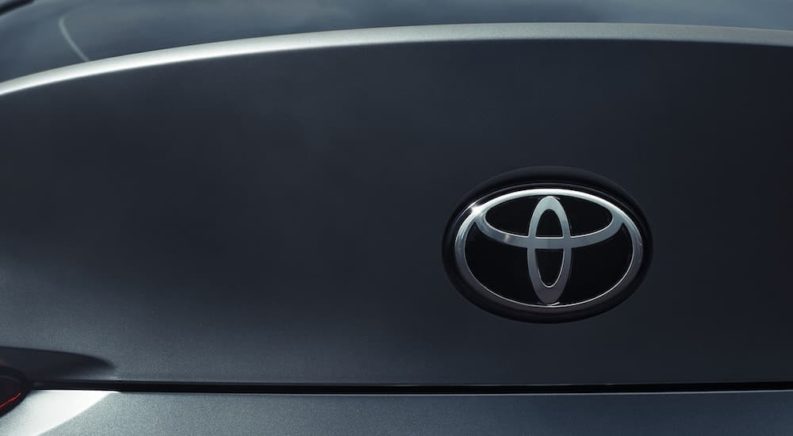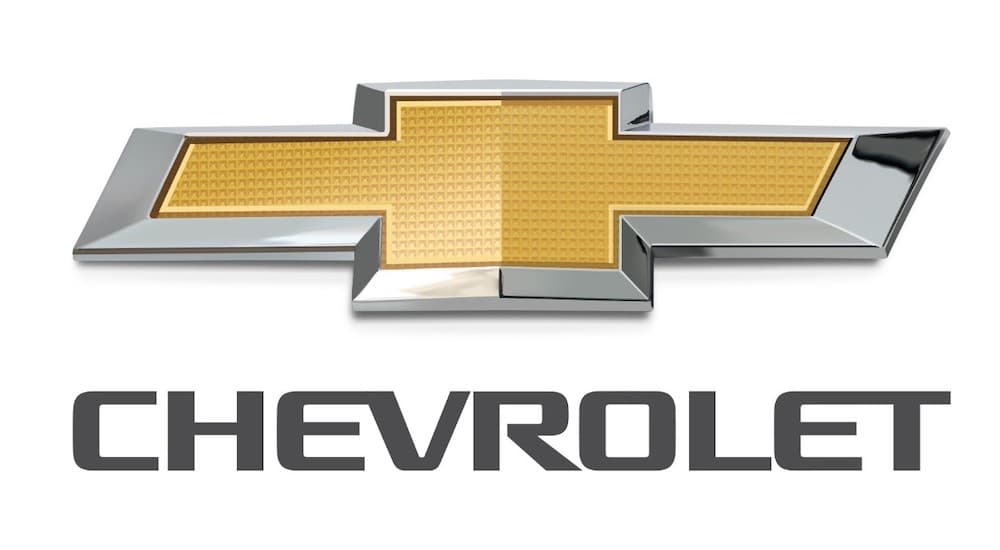Companies devote a surprising amount of energy and resources into creating the perfect logo, and for a good reason. Logos possess the monumental task of conveying the essence of a company’s mission in a single symbol. Some companies – like Apple – hang entire brand strategies on that symbol, letting the image evoke emotion and human connection to the products or services it promotes. If you’re a Toyota truck dealer, you’re happy to sell one of America’s favorite truck brands with one of the most recognizable logos, but you may not entirely know exactly what the Toyota logo means.
Logos are a relatively new arrow in the corporate marketing quiver and are a modern-day transmutation of the family crest, which dates back to the 13th century. Merriam-Webster defines a logo as “an identifying symbol (as for use in advertising),” and dictionary.com calls it “…a graphic representation or symbol of a company name, trademark, abbreviation, etc., often uniquely designed for ready recognition.” Think Nike’s iconic swoosh here. In other words, logos are very important to a company’s overall brand image.
Brand Recognizability is Key
Think of Apple’s clean, consistent apple image or Starbucks’ green-circled siren, often misidentified as a mermaid. These logos are highly recognizable and immediately associated with not only the company but the emotion the company’s products are designed to elicit. The apple equals minimalist-inspired technology to make life simple, while the bright green Starbucks emblem evokes a steaming hot latte and the buzz of a busy coffee shop.
What about automobile manufacturers? Some of the most iconic logos are prominently displayed on the grilles of cars we see every day on the road. They’re so pervasive that we don’t even realize we’re naming the car’s brand just by catching a glimpse of the front end. Which logos are the most recognizable? Here’s our list of some of the most recognizable car brand logos, along with the hidden meaning behind each one.

Ferrari
One of the most aspirational cars on the road today, the Ferrari evokes thoughts of ultra-performance and high price tags. Ferrari posters adorned the walls of teenagers’ bedrooms almost as often as favorite sports legends. The Ferrari brand is the essence of luxury, and its recognizable logo reminds us all that Ferrari is all Italian.
Founded by Enzo Ferrari in 1923, the Italian high-performance automobile maker was inspired by a fighter pilot named Francesco Baracca. Baracca, a decorated war hero, famously painted a black horse onto his plane. That black horse inspired Ferrari, who created his company’s logo around it. The “prancing horse” is prominent against a bright yellow backdrop, with the red, white, and green Italian flag colors horizontally depicted at the top.
What it’s intended to convey: speed, decadence, aspiration
Mercedes
The three-pointed star depicted in the Mercedes-Benz logo originated back in 1909 when founder Gottlieb Daimler’s sons found a postcard their father had written to their mother in 1872. The picture of a crudely hand-drawn star was accompanied by a note that conveyed his furtive wish for prosperity and success that would come when the star shined over his factory. A merger with Benz & Cie Company added the logo’s laurel wreath that surrounds the star around the perimeter, and eventually, the colored logo was changed to all-silver. The three points are said to represent land, sea, air, and Mercedes Benz’s commitment to motorizing transportation.
What it’s intended to convey: austere luxury, strength
Chevrolet
The Chevrolet ‘bowtie’ is immediately recognizable, and that’s because the company has stuck with its traditional logo design, with a few updates, since 1913. Said to be inspired by the wallpaper in his Paris hotel room, Chevy co-founder William C. Durant sketched a design that eventually became the company’s logo. Conflicting stories abound, but most agree this is probably how it happened. Interestingly, Chevy led with the logo in its early newspaper advertisements, encouraging buyers to “look for this nameplate” when buying a car and inadvertently starting a revolution in corporate advertising. In a time when words sold cars, Chevy pivoted and chose to depict its brand with a single abstract image – the classic bowtie.
What it’s intended to convey: dependability, economy, quality
Cadillac
There’s a lot going on behind the Cadillac logo, including noble crests, a wreath, and even a few ducks (yes, we said ducks!). It’s a fascinating graphic and one that enthusiasts have exhaustively examined and re-examined for hidden meanings. Unfortunately, the logo has changed over 40 times since it was initially conceived, so while the ducks are gone now, the most prominent feature – the colorful crest – remains.
The original logo was actually designed by the founder of Detroit, Michigan, Antoine de la Mothe Cadillac. It contained a crown (for the six ancient French counts), the Merlettes (or ducks) representing his parental lineage in two sets of three, color stripes representing superiority, riches, boldness, virtue, and valor, and the laurel wreath for an air of aristocracy.
What it’s intended to convey: boldness and prowess
BMW
BMW’s official name for its logo is the BMW Roundel, and rumors imply that it is meant to depict a propeller against the sky, but that’s not exactly true. It’s a handy and logical explanation, though, because, in its early days, the company built airplane engines. In fact, BMW – which stands for Bavarian Motor Works – created the logo to honor the Bavarian state flag, which is blue and white.
The logo has received minimal updates since its debut in the 1920s, and it’s still prominently featured on BMW vehicles today. The logo is flush on each new BMW’s hood rather than incorporated into the grille, and at no time did BMW add a hood ornament (like Mercedes). This understated logo presentation is symbolic of the company’s consistency and its vehicles’ understated elegance.
What it’s intended to convey: advanced design, performance, refinement
Toyota
Toyota, previously known as Toyoda, is known for building some of the most reliable cars on the road. That reputation is fueled in part by the company’s own efforts to promote an image of capability and trustworthiness. Their logo, while it’s not always the most instantly recognizable, is packed with intention and designed to convey the company’s core mission.
The logo is made up of three different overlapping ellipses. Each ellipse symbolizes a different pillar of the company’s overall purpose, and where they overlap is symbolic of how the meanings interrelate. The vertical ellipse represents the heart of Toyota customers, the horizontal ellipse depicts the heart of Toyota products, and the large elliptical background space is the overarching technological advancement that drives Toyota innovation. The vertical and horizontal ellipses intersect at the top of the logo (kind of like a T), meaning that they want their customers and their products to align. The two overlapping ellipses being encased by the large elliptical background represents Toyota trying to make its customers happy through innovation that ultimately makes their lives better.
What it’s intended to convey: trust, reliability, commitment
Logos Are More Important Than You Think
Logos play a critical role in a company’s overall marketing strategy. If they’re strategic and well-designed, they reward companies with instant brand recognition. Bad logos are either unrecognizable or, even worse, controversial. Consumers develop emotional attachments to logos too, so when a company decides to change theirs, it is often met with anger and backlash.
Auto manufacturers place a lot of importance on their logos, as evidenced by the fact that they appear prominently on vehicles. Great logos combine history with key brand attributes, and the very best ones end up hanging on the walls of future buyers as symbols of product allegiance, future success, and happiness.
In this new, highly competitive online marketplace, instantly recognizable logos give companies a distinct edge. Great logos capitalize on consumers’ short attention spans by conveying volumes of meaning in a single image, and this strategy plays well across all types of advertising media, especially today in the information age. Customers are more likely to buy from companies they trust, and having an easily recognizable logo will make a brand stand out from the crowd when the customer is mindlessly scrolling through their options. Logos don’t have to be complex to be effective, but the best logos are those that have meaning and company loyalty behind them.





